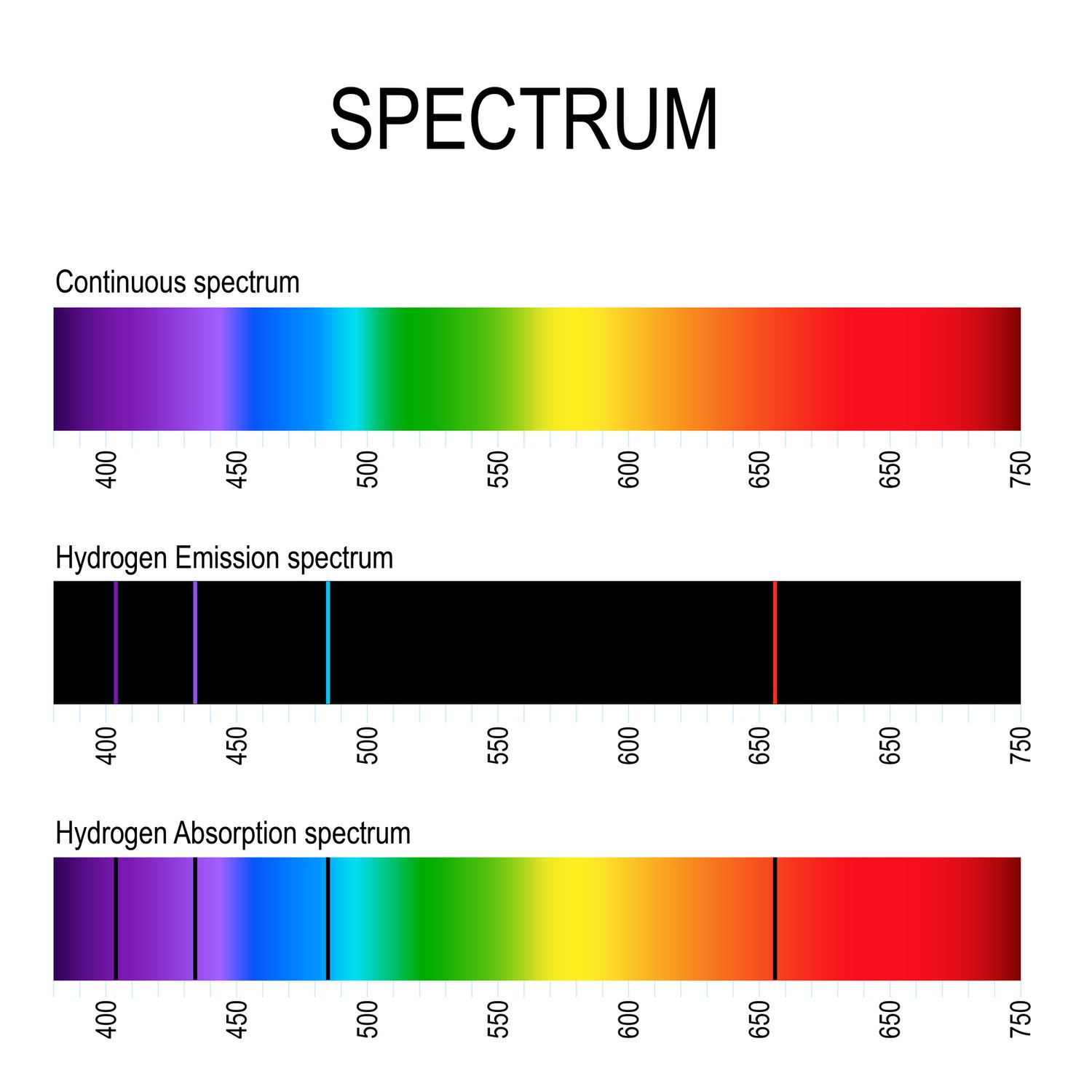I will try to answer your question using the example of the atomic hydrogen spectrum.
Take a look at the below image:

The continuous spectrum would be your white light.
If you shine this white light onto some hydrogen, the hydrogen atoms will absorb specific wavelengths of this incoming white light. The resulting spectrum is the hydrogen absorption spectrum. You see that there are regions with black lines such as at 656nm. These are the hydrogen absorption lines. In fact, what happens for the 656nm line is that an electron in hydrogen is excited from the n = 2 energy level to the n = 3 energy level. In doing so a photon of 656nm wavelength is absorbed by the atom.
Now turn off the white light source. What happens to the hydrogen? The electrons return from the excited energy states to their original energy states. In doing so the hydrogen emits specific wavelengths of light. So what does this look like?
Since the white light is turned off we expect a completely black spectrum if the hydrogen was not emitting. Since the hydrogen is emitting there will be emission lines on top of the black spectrum. This looks like the hydrogen emission spectrum above. You see that there is an emission line at 656nm this occurs when an electron is deexcited from the n = 3 energy level to the n = 2 energy level.
You can see that the absorption and emission lines correspond to one another between the absorption and emission spectra. That is, hydrogen absorbs and emits at the same wavelengths*.
*This isn't strictly true as I am simplifying here

